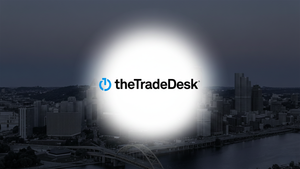
In a landmark move poised to reshape the landscape where traditional finance (TradFi) intersects with decentralized finance (DeFi), Société Générale's (EPA:GLE) digital asset subsidiary, SG-FORGE, has officially deployed its euro and dollar stablecoins, EUR CoinVertible (EURCV) and USD CoinVertible (USDCV), on prominent Ethereum-based DeFi protocols Uniswap and Morpho. This strategic integration, effective September 30, 2025, represents a significant stride by a major global banking group into the permissionless realm of blockchain, offering regulated, institutional-grade financial assets directly to the DeFi ecosystem.
The immediate implications of this deployment are profound. By bringing fully compliant, MiCA-regulated stablecoins to leading DeFi platforms, SG-FORGE is not only bridging the gap between two previously distinct financial worlds but also setting a new precedent for institutional engagement in digital assets. This initiative promises to enhance institutional-grade liquidity, drive operational efficiencies, and open up sophisticated use cases for corporate and institutional clients, such as 24/7 on-chain settlement, foreign exchange, and collateral management, all while adhering to stringent regulatory standards.
A New Era for Institutional DeFi Engagement
Société Générale's (EPA:GLE) SG-FORGE has meticulously orchestrated the deployment of its EUR CoinVertible (EURCV) and USD CoinVertible (USDCV) stablecoins, marking a pivotal moment in the evolution of financial markets. EURCV, pegged to the euro, initially launched in April 2023, while USDCV, pegged to the US dollar, debuted on June 10, 2025, with trading commencing in early July 2025. Both stablecoins are designed to be 100% backed by cash held in segregated accounts—Société Générale for EURCV and BNY Mellon (NYSE: BK) for USDCV—and are fully redeemable 1:1 for their respective fiat currencies. Issued on public Ethereum (ERC20) and Solana blockchains, with EURCV also slated for expansion to the XRP Ledger in 2025, these assets are poised for broad accessibility.
The deployment targets two critical DeFi protocols: Morpho and Uniswap. On Morpho, users can now lend and borrow EURCV and USDCV against a range of collateral, including major cryptocurrencies like Bitcoin (BTC) and Ethereum (ETH), as well as tokenized money market funds such as USTBL and EUTBL, which invest in US and Eurozone treasury bills. This functionality is overseen by MEV Capital, which manages applicable vaults, collateral rules, and default handling. Concurrently, Uniswap (NASDAQ: UNI) will facilitate spot trading for these stablecoins, with market maker Flowdesk ensuring robust liquidity and smooth transactions. Both EURCV and USDCV are classified as Electronic-Money Tokens (EMTs) and are fully compliant with the European Markets in Crypto-assets (MiCA) regulation, underscoring SG-FORGE's commitment to a regulated and transparent approach. SG-FORGE itself operates under an Electronic Money Institution (EMI) license from the French Autorité de Contrôle Prudentiel et de Résolution (ACPR). The initial market reaction has been cautiously optimistic, with many in the DeFi space viewing this as a significant validation of blockchain technology's potential to integrate with traditional financial infrastructure.
Key players in this initiative include Société Générale (EPA:GLE) as the parent institution, SG-FORGE as the digital asset issuer, BNY Mellon (NYSE: BK) as a custodian for USDCV, and DeFi protocols Uniswap (NASDAQ: UNI) and Morpho. Market maker Flowdesk and vault manager MEV Capital also play crucial roles in ensuring the operational integrity and liquidity of the stablecoins within the DeFi ecosystem. This collaborative effort highlights a growing trend of institutional engagement with decentralized platforms, driven by the pursuit of efficiency, transparency, and new market opportunities.
Winners and Losers in the Evolving Financial Landscape
Société Générale's (EPA:GLE) foray into DeFi with its euro and dollar stablecoins is set to create distinct winners and losers across the financial spectrum. Clearly, SG-FORGE and its parent company, Société Générale, stand as immediate winners. This move solidifies their position as pioneers in bridging TradFi and DeFi, potentially attracting a new class of institutional clients seeking regulated access to decentralized markets. The ability to offer 24/7 on-chain settlement and advanced collateral management with compliant assets could significantly boost their market share in digital asset services. This also enhances their brand as an innovative financial institution capable of adapting to the rapidly evolving digital economy.
The DeFi protocols involved, Uniswap and Morpho, are also significant beneficiaries. By hosting institutional-grade stablecoins from a major European bank, these platforms gain enhanced legitimacy and attract greater institutional liquidity. Uniswap (NASDAQ: UNI) will see increased trading volumes and potentially new users, while Morpho will benefit from a more diverse and robust lending/borrowing market, offering its users more options and deeper liquidity. This partnership validates their infrastructure and could pave the way for other traditional financial entities to follow suit, boosting their prominence in the wider financial ecosystem. Market maker Flowdesk, responsible for maintaining liquidity on Uniswap, and MEV Capital, managing vaults on Morpho, will also see increased activity and potential revenue from their roles in facilitating these institutional flows.
Conversely, traditional financial institutions that are slow to embrace digital assets and DeFi could find themselves at a disadvantage. Banks and financial service providers that do not develop similar offerings risk losing clients to more agile competitors like Société Générale. The operational efficiencies and 24/7 nature of blockchain-based transactions could expose the limitations of legacy systems, pushing clients towards more modern solutions. Furthermore, other stablecoin issuers that lack the regulatory backing and institutional trust of a major bank might face increased competition, especially for institutional adoption. While existing stablecoins like USDC (Centre Consortium) and USDT (Tether) have strong retail and crypto-native institutional bases, the entry of a fully regulated bank-issued stablecoin could carve out a significant niche in the corporate and regulated institutional space, forcing others to adapt their strategies to remain competitive.
Wider Significance: A Paradigm Shift for Finance
Société Générale's (EPA:GLE) deployment of EURCV and USDCV on Uniswap and Morpho is more than just a product launch; it signifies a paradigm shift in the broader financial industry. This event fits squarely into the burgeoning trend of tokenization of real-world assets (RWAs) and the increasing convergence of TradFi and DeFi. For years, the crypto world has envisioned a future where traditional assets operate on blockchain rails, offering enhanced transparency, efficiency, and accessibility. SG-FORGE's move is a tangible realization of this vision, demonstrating that regulated financial products can indeed thrive in permissionless environments, providing a blueprint for other institutions contemplating similar ventures.
The potential ripple effects on competitors and partners are substantial. Other global banks and financial institutions are likely to closely monitor the success and challenges faced by Société Générale. Those that have been hesitant to engage deeply with DeFi may now feel compelled to accelerate their own digital asset strategies to avoid being left behind. This could lead to a wave of similar initiatives, fostering a more competitive and innovative landscape for digital financial services. For existing DeFi protocols, this brings both opportunities and challenges; while it validates the technology, it also introduces a new class of institutional participants with different demands and regulatory requirements. Partnerships between TradFi giants and DeFi innovators could become more commonplace, blurring the lines between the two sectors.
From a regulatory standpoint, SG-FORGE's adherence to the European Markets in Crypto-assets (MiCA) regulation is particularly significant. MiCA, one of the most comprehensive regulatory frameworks for crypto assets globally, provides a clear pathway for compliant stablecoin issuance and operation. This move by Société Générale demonstrates that robust regulatory compliance is not an impediment but an enabler for institutional participation in DeFi. It could encourage other jurisdictions to develop similar clear regulatory guidelines, fostering a more secure and trustworthy environment for digital assets. Historically, the financial industry has seen various innovations, from electronic trading to algorithmic finance, gradually integrate into the mainstream. This stablecoin deployment can be compared to the early days of electronic bond trading or the introduction of exchange-traded funds (ETFs), where new technologies and financial instruments slowly gained acceptance and eventually transformed market structures.
What Comes Next: The Road Ahead
The deployment of SG-FORGE's stablecoins on Uniswap and Morpho ushers in a new phase of development for both traditional and decentralized finance. In the short term, the focus will be on the adoption rates of EURCV and USDCV among institutional clients and their performance on the DeFi platforms. Success will be measured by liquidity growth, transaction volumes, and the seamless integration into existing institutional workflows. We can expect SG-FORGE to actively engage with its client base to educate them on the benefits and functionalities of these stablecoins, potentially expanding their use cases beyond initial lending, borrowing, and trading to areas like cross-border payments and treasury management.
In the long term, this move could catalyze several strategic pivots across the financial industry. Traditional banks may increasingly view public blockchains not merely as a threat but as a foundational infrastructure for future financial services. This could lead to further tokenization efforts, extending beyond stablecoins to other asset classes such as bonds, equities, and real estate. The demand for robust, compliant infrastructure to support these tokenized assets will likely surge, creating opportunities for technology providers specializing in blockchain solutions, cybersecurity, and regulatory compliance. Market opportunities will emerge for new financial products built on these institutional stablecoins, such as structured products, derivatives, and more sophisticated yield-generating strategies accessible to a wider institutional audience.
Potential scenarios and outcomes include a future where regulated stablecoins become a standard component of institutional portfolios, facilitating instant settlement and collateral management across diverse markets. Conversely, challenges might arise from scalability issues on public blockchains, evolving regulatory landscapes, or unforeseen security vulnerabilities, which could slow adoption. However, the current trajectory suggests a future where the lines between TradFi and DeFi continue to blur, fostering a more efficient, transparent, and globally interconnected financial system. Investors should watch for further announcements regarding partnerships, new product offerings built on these stablecoins, and any regulatory shifts that might impact their adoption and utility.
Wrap-Up: A New Chapter for Financial Markets
Société Générale's (EPA:GLE) SG-FORGE's strategic deployment of EUR CoinVertible (EURCV) and USD CoinVertible (USDCV) on Uniswap (NASDAQ: UNI) and Morpho marks a pivotal moment in the ongoing convergence of traditional finance and decentralized finance. The key takeaway is the successful integration of fully regulated, institutional-grade stablecoins into permissionless DeFi protocols, setting a powerful precedent for how major financial institutions can engage with the digital asset ecosystem. This move validates the potential of blockchain technology to enhance efficiency, transparency, and accessibility for financial services, offering 24/7 operations and sophisticated use cases for corporate and institutional clients.
Moving forward, the market is poised for significant transformation. This initiative is likely to spur other traditional financial players to accelerate their own digital asset strategies, fostering increased competition and innovation in the space. The emphasis on MiCA compliance by SG-FORGE also highlights the critical role of clear regulatory frameworks in facilitating institutional adoption of digital assets. This could encourage regulators globally to develop similar guidelines, ultimately building a more secure and trustworthy environment for the broader digital economy.
The lasting impact of this event could be the normalization of institutional participation in DeFi, leading to a more interconnected and efficient global financial system. Investors should closely monitor the adoption rates and performance of EURCV and USDCV, as well as the responses from other major banks and financial institutions. The evolution of regulatory landscapes, the emergence of new blockchain-based financial products, and the ongoing development of DeFi infrastructure will all be critical indicators to watch in the coming months, offering insights into the future direction of financial markets.
This content is intended for informational purposes only and is not financial advice





